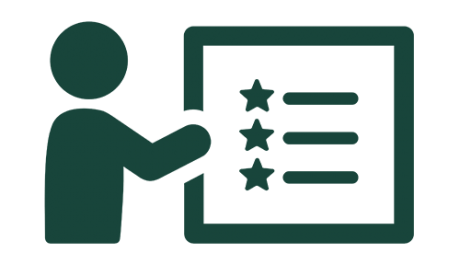
Within a team atmosphere, having a cohesive workplace allows employees to work well together and feel they contribute to the overall success of the group. When employees are in a cohesive work environment, they focus more on the group goals than their individual success, becoming motivated by the team’s efforts.
Team building allows employees to interact and connect outside of their typical day-to-day work interactions. During conversations within team building activities, employees may get the chance to interact with others in a different way than in their workspace, revealing different aspects of their personalities that may not come out in normal work interactions (Teachout, n.d.). Other general benefits of team building activities and knowing one another better is building trust between employees, increasing employee engagement, encouraging communication, mitigating conflict, and increasing collaboration (Scudamore, 2016).
 Practical Example
Practical Example
There are many team-building activities work teams can participate in to improve group cohesion and build trust. Off-site retreats or meetings is one of those activities. Generally, offsite retreats increase employees’ creativity, improve their communication, and show employees they are valued (Tabaka, 2018). Off-site retreats can be normal meetings about normal work tasks, but having them off-site helps them be a little different and becomes a team-building experience. Off-site retreats should be scheduled well in advance and the meeting will be more productive if employees are asked to prepare. Having a retreat or meeting off-site allows for a little extra social time, which is important for building trust and deeper understanding of one another (Tabaka, 2018).
Another way to increase the cohesiveness of a workplace is to encourage employees to be good colleagues. Employees being good colleagues to one another makes the work environment more collaborative and cohesive. A good colleague is an employee who supports their coworkers, tries to build relationships with others, performs good work, and is positive, trustworthy, and honest (Hutchison, n.d.a). Some more specific tips on how to be a good colleague are to try to build relationships, talk to others with respect, and work to build trust with coworkers. Employees keeping their commitments by returning phone calls and emails in a timely manner builds trust (Hutchison, n.d.a). Additionally, being honest and sharing credit for accomplishments and ideas can help coworkers learn to rely on each other and trust each other more. Employees helping others develop and being inclusive with their actions and their communication can build trust and help them be good colleagues, too. Lastly, bringing ideas for solutions when issues arise and connecting with coworkers on every level of employment, including those in positions higher than their or supporting their position, can also help employees be good colleagues (Hutchison, n.d.a).
 At a Glance
At a Glance
Having a cohesive workplace consists of having a group of employees who work well together and everyone feels they contribute to the overall success of the group.
How to build a cohesive workplace:
- Implement team-building
- Support colleagues professionally and, if comfortable, personally
- Model the coworker others would like to have
Benefits of team building:
- Builds trust between employees
- Increases employee engagement
- Encourages communication
- Mitigates conflict
- Increases collaboration
- Increases creativity
- Improves communication
- In-person brainstorming can improve efficiency and impact
- Employees get a chance to interact with others in a different way and see different aspects of their personalities that may not come out in normal work interactions, getting to know one another more deeply so they can work more cohesively
- Increases rapport, team spirit, and feelings toward the organization, supervisors, and coworkers
How to be a good colleague:
A good colleague is an employee who supports their coworkers, tries to build relationships with others, performs good work, and is positive, trustworthy, and honest.
- Try to build relationships with coworkers
- Keep to commitments by returning phone calls and emails in a timely manner
- Meet deadlines, and communicate when you can’t
- Work to build trust with coworkers
- Share credit for accomplishments and ideas
- Talk to others with respect
- Be honest in communication
- Have a positive attitude and talk positively about others
- Be inclusive in actions and communication
- Help others develop
- Discuss problems with the people directly involved first
- Bring ideas for solutions when issues arise
- Connect with coworkers on every level of employment
 MSU In Action
MSU In Action
The WorkLife Office offers many presentations and trainings on a variety of topics including developing positive workplace cultures, such as Building Your Best Colleague. This presentation teaches employees what it means to be a good colleague and how to improve their workplace actions to become a better colleague, as well as how to build community and support one another. If units are interested in learning more about creating good colleagues in their workplace, see the inside cover for information on how to request a presentation.
Resources on Campus
- MSU Human Resources Organization and Professional Development
- Provide services to help individual employees and units to develop skills that can improve the unit’s teamwork and employees’ cohesion
- See https://hr.msu.edu/professional-development/ for more information
- Human Resources Consulting Services
- Consults with departments on many topics, including team building, workplace climate, culture, and interpersonal relationships
- Can help departments with communication to build cohesion, trust, and respect, identify core values, develop methods for employee recognition to enhance feelings of self-worth and importance to the department, and provide coaching on how to integrate all styles of work for a positive work culture
- Visit https://hr.msu.edu/ua/organizational-resources/consulting-services.html#Consulting_Services for more information
- Consults with departments on many topics, including team building, workplace climate, culture, and interpersonal relationships
- WorkLife Office
- Offers many presentations and trainings on a variety of topics including building trust and teamwork, such as Building Your Best Colleague. This presentation teaches employees what it means to be a good colleague and how to improve workplace interactions to work better together, as well as how to build a good culture and community, and support one another
- See the introduction page for information on how to request a presentation
- Offers many presentations and trainings on a variety of topics including building trust and teamwork, such as Building Your Best Colleague. This presentation teaches employees what it means to be a good colleague and how to improve workplace interactions to work better together, as well as how to build a good culture and community, and support one another
- Health4U
- Offers various courses, including wellness and activity classes, that units can participate in together as team-building exercises
- Visit https://health4u.msu.edu/courses for a list of their current classes
- Academic Advancement Network
- Offers professional development courses on a variety of topics, including leadership and management, that units can participate in together as a team-building exercise
- Visit https://aan.msu.edu/leadership-development/# for more information or to contact them about an educational opportunity for MSU units
 References
References
Hutchison, J. (n.d.a). Building your best colleague. [PowerPoint slides]. Michigan State University WorkLife Office. https://michiganstate.sharepoint.com/:p:/r/sites/MSUWorkLifeOffice/_layouts/15/Doc.aspx?sourcedoc=%7B7CDDEC87-C248-442D-8D15-501552299B82%7D&file=Building%20Your%20Best%20Colleague.pptx&action=edit&mobileredirect=true
Scudamore, B. (2016, March 9). Why team building is the most important investment you’ll make. Forbes. https://www.forbes.com/sites/brianscudamore/2016/03/09/why-team-building-is-the-most-important-investment-youll-make/#10ca91e3617f
Tabaka, M. (2018, July 23). Never be too busy to hold an offsite employee meeting. Here’s why. Inc. https://www.inc.com/marla-tabaka/never-be-too-busy-to-hold-an-offsite-employee-meeting-heres-why.html
Teachout, G. (n.d.). Keeping on track: Getting creative with team building. Michigan State University WorkLife Office. https://worklife.msu.edu/news/keeping-track-getting-creative-team-building
